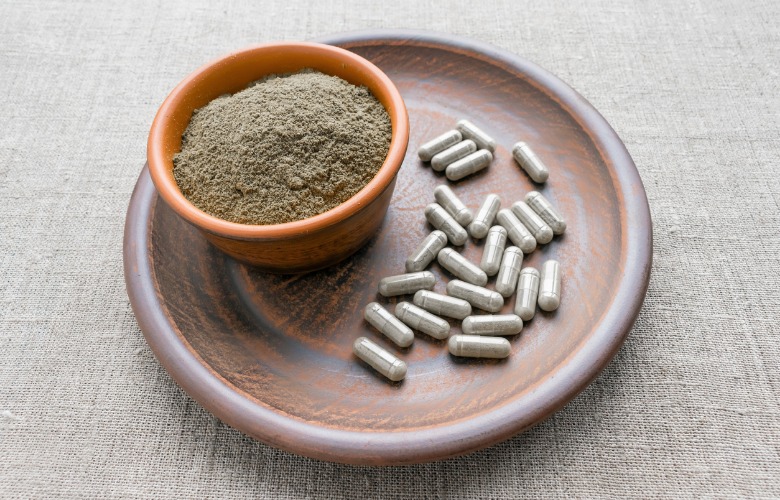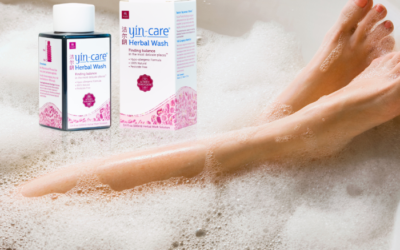TCM Approach to Gut Health
Between the microbiomes of the skin and intestines, comparing cell for cell, the ratio is 1:1. (1) Basically we are a 50/50 mix of human cells and micororganisms. The microbes function as an extra organ, influencing health for better or worse. Most of the microbes live in the gut. This microbiome influences digestion, nutrient absorption, and immune response. Gut upsets and diseases occur when there is an overgrowth or lack of particular microbes.
Research on the gut microbiome in the last decade has surged. There are many interesting findings. The microbiome plays a role in conditions like irritable bowel syndrome (IBS) and inflammatory bowel disease (2)(3)(4). It may affect heart health. Certain unhealthy species can contribute to heart disease by producing trimethylamine N-oxide (TMAO). TMAO contributes to blocked arteries, increasing the risk for heart attack or stroke. (5)(6)(7) By communicating with immune cells, the gut microbiome influences how the rest of the body responds to infection. (8)(9)
The central nervous system is effected which in turn affects brain function. (10) The intestines are connected to the brain through millions of nerves. The microbiome impact brain health by helping to control the nerve messages sent to the brain. (11)
The guts as the pivot of health is not a new thing. Traditional Chinese Medicine (TCM) addresses gut health through the functions of the Spleen and Stomach. TCM theory says these organs are responsible for taking in food and drink and transforming it into Qi (energy) for the body’s core functions. When the Spleen and Stomach are nourished all the other organs are nourished as well. Revered Chinese doctor Li Dong Yuan (1180-1251 CE) founded the Earth School based on digestive function. The basis of the Earth School is simple. All health imbalances are the result of weak digestion. Earth School theory includes parallels the findings of modern gut research. Both share views on the physical, mental and emotional aspects accompanying gut imbalance.
Whether we are using the language of medical diagnosis or TCM the signs and symptoms of a gut out of balance are the same. The gut speaks with symptoms of bloating, gas, pain, diarrhea, and constipation. If these are present there is surely something not right. Given what is evident from the research if symptoms are changed by an herb formula the microbiome has changed as well. The following are four gut formulas which have stood the test of time.
Shen Ling Bai Du San
Ginseng, Poria, and White Atractylodes Powder
For over a thousand years this formula has been helping people with weak digestion and resulting diarrhea. In TCM terms weak digestion is a deficient Spleen, which results in internal dampness. Spleen deficiency is often the result of overwork or improper eating habits. The focus of this formula is to help the Spleen and dry the dampness. Classically, Shen Ling Bai Du San is used for bloating, indigestion, loose stools, and diarrhea. This formula can be used for chronic gastritis, enteritis, irritable bowel, and the side effects of chemo and radiation therapy. (12). Shen Ling Bai Du San does it’s magic by altering the microbiome. A study pitted Shen Ling Bai Du San against antibiotic diarrhea. The herb formula changed the microbiome and the diarrhea stopped(13).
Serving Size: Use according to directions or the advice of your knowledgeable healthcare practitioner.
Shu Gan Wan
Reading labels and finding a good brand is important in herbal medicine. There is Chai Hu Shu Gan Wan, Shu Gan Tang, Shu Gan Wan and Shu Kan Wan. Gan can be the same as Kan. A Shu Gan Wan from one manufacturer can be a different formula than a Shu Gan Wan from another. Plum Flower Brand’s Shu Gan Wan is called Soothe Liver Teapills. It is a good formula for poor digestion when symptoms are worse with emotional upset. Those symptoms include loose stools, bloating, belching, heartburn, vomiting, and headache. One of the precepts of the Earth School is that excessive emotions weaken the digestion. Emotional upset can cause the Liver to overact on the Stomach causing the aforementioned symptoms. Chai Hu the main herb in this formula, along with Bai Shao and Xiang Fu harmonize the liver. Don’t you feel better just knowing that?
Serving Size: 8 count 3 times a day
Seven Forests Shen Chu 16
Xiao Dan Pian
Food Stagnation as a TCM diagnosis is what it sounds like. We’ve had had it at one time or another. That uncomfortable feeling that food is not moving through the system. Indeed your meal seems to have become larger after ingestion. Shen Chu 16 is right for indigestion when after eating there is tiredness, nausea, bloating, nasal congestion and mucus. As the name implies this formula is made from 16 herbs. Working together they disperse food stagnation, dry excess moisture, and phlegm and help the organs of digestion. Individually a few the herbs are quite notable for they effect on microorganisms. Check it out.
Shan Zha (Crataegus) is antibiotic and effective against the bacteria that cause dysentery. Huo Xiang (Agastache) this herb inhibits fungi. Chen Pi (Citrus Peel) shows to be anti-inflammatory. Hou Po (Magnolia Bark) is anti-bacterial, anti-viral, and treats amebic dysentery.(14)
Serving Size: 2-3 count 3 times a day.

Triphala
Triphala is an Ayurvedic formula made of three fruits. Amala (Emblica Officinalis), Harada (Terminalia chebula)and Bibhitaki (Terminalia bellirica). Amla and Bihitaki are rejuvenators and laxatives from Ayurvedic herbalism. Harada, called the Tibetan “king of medicine, is originally from Iranian herbal traditions. Traditionally it is used as a digestive cleanser and for spiritual advancement. The combination of those three fruits creates a formula which is tridoshic, or benefits all three doshas. A dosha is the patterning diagnostic system used in Ayurvedic medicine. Triphala has everyone covered. Used for over a thousand years as a digestive, bowel cleanser, and rejuvenator, Triphala is the subject of many modern studies. Results show a remarkable formula of great versatility. Sounds hyperbolic, read on and then decide.
Intestinally Speaking
As a bowel mover, Triphala performs well. Researchers concluded it is an effective, safe, and non-habit-forming herbal laxative for the management of constipation. (15) In a rat study using induced colitis, Triphala helped all the rats. The researchers concluded Triphala had a considerable and reliable effect in reducing colitis. They attributed this to its antioxidant activity and flavonoid content. (16)
Fatty Stuff and Arteries
Researchers found Triphala to produce a positive effect on weight loss in very overweight subjects(17). When mice fed a high-fat diet also took Triphala, they maintained a healthy blood lipid profile. Also the mouse livers reversed the pathological tissue changes and visceral fat decreased.(18) Rats helped out to show that Triphala helps keep cholesterol normalized with a high-fat diet.(19) In vitro research suggests that Triphala inhibits arterial plaque. (20)
Mouth
Triphala decreases dental plaque, gum inflammation, and microbial overgrowth in the mouth (21)(22).
Cancer
Triphala is found to suppress and kill colon cancer cells (23) and prostate cancer cells (24) When used as a mouthwash for 9 months the formula reversed precancerous oral lesions. (26) It has been determined that Triphala kills cancer cells but not normal cells in both vitro and vivo studies (25)
Usage: Triphala comes in many forms: powder, capsule or tablet. Serving size should be on the packaging. Larger serving size will have a more laxative effect, whereas a smaller one is considered more blood purifying. As a digestive tonic and laxative, Triphala is best taken in the evening, about two hours after eating, and at least 30 minutes before bedtime.
Unlike some laxative products, one cannot become dependent on Triphala. For best results taken 2-3 weeks off every 10 weeks to assess progress and adjust serving size if necessary. This will also sustain the effectiveness of the remedy
If your guts are talking to you – listen, they are on your side.
Disclaimer
Use herbs wisely. If you have questions or special considerations, work with your practitioner. If symptoms worsen or you have concerns, contact a knowledgeable practitioner. These statements have not been evaluated by the Food and Drug Administration. These products are not intended to diagnose, treat, cure or prevent any disease.
References
1 PLOS Biology 2016 Aug; 14(8): e1002533. Revised Estimates for the Number of Human and
Bacteria Cells in the Body, Ron Sender, Shai Fuchs, and Ron Milo,
2 World Journal of Gastroenterology 2014 Oct 21; 20(39): 14105–14125.
Irritable bowel syndrome: A microbiome-gut-brain axis disorder? Paul J Kennedy, John F Cryan,
Timothy G Dinan, and Gerard Clarke
3 World Journal of Gastroenterology 2016 Feb 21; 22(7): 2219–2241.
Published online 2016 Feb 21. Gut microbiota role in irritable bowel syndrome: New therapeutic
strategies, Eleonora Distrutti, Lorenzo Monaldi, Patrizia Ricci, and Stefano Fiorucci
https://www.ncbi.nlm.nih.gov/pmc/articles/PMC4734998/
4 Nature Microbiology 2017 Feb 13;2:17004. Dynamics of the human gut microbiome in
inflammatory bowel disease. Halfvarson J, Brislawn CJ, Lamendella R, Vázquez-Baeza Y,
Walters WA, Bramer LM, D’Amato M, Bonfiglio F, McDonald D10, Gonzalez A, McClure EE,
Dunklebarger MF, Knight R, Jansson JK.
https://www.ncbi.nlm.nih.gov/pubmed/28191884
5 Nature, 2011 Apr 7, 47297341):57-63, Gut flora metabolism of phosphatidylcholine promotes
cardiovascular disease, Zeneng Wang, Elizabeth Klipfell, Brian J. Bennett, Robert Koeth, Bruce
S. Levison, Brandon DuGar, Ariel E. Feldstein, Earl B. Britt, Xiaoming Fu, Yoon-Mi Chung,
Yuping Wu, Phil Schauer, Jonathan D. Smith, Hooman Allayee, W. H. Wilson Tang, Joseph A.
DiDonato, Aldons J. Lusis, and Stanley L. Hazen
6 Circulation 2017 Apr 25;135(17):1671-1673, Gut Microbe-Generated Trimethylamine N-
Oxide From Dietary Choline Is Prothrombotic in Subjects. Zhu W, Wang Z, Tang WHW, Hazen
SL. https://www.ncbi.nlm.nih.gov/pubmed/28438808
7 Natural Medicine, 07 April 2013Intestinal microbiota metabolism of L-carnitine, a nutrient in
red meat, promotes atherosclerosis, Robert A Koeth, Zeneng Wang, Bruce S Levison, Jennifer
A Buffa, Elin Org, Brendan T Sheehy, Earl B Britt, Xiaoming Fu, Yuping Wu, Lin Li, Jonathan D
Smith, Joseph A DiDonato, Jun Chen, Hongzhe Li, Gary D Wu, James D Lewis, Manya Warrier,
J Mark Brown, Ronald M Krauss, W H Wilson Tang, Frederic D Bushman, Aldons J Lusis &
Stanley L Hazen
8 Nature Reviews Immunology 2016 May 27;16(6):341-52. doi: 10.1038/nri.2016.42., Gut
microbiota, metabolites, and host immunity. Rooks MG, Garrett WS
https://www.ncbi.nlm.nih.gov/pubmed/27231050
9 Nature Reviews Immunology 2017 Apr;17(4):219-232. Dysbiosis and the immune system.
Levy M1, Kolodziejczyk AA1, Thaiss CA1, Elinav E1.
https://www.ncbi.nlm.nih.gov/pubmed/28260787
10 Advances in Experimental Medicine and Biology 2014;817:115-33. Vagal pathways for
microbiome-brain-gut axis communication. Forsythe P, Bienenstock J, Kunze WA.
https://www.ncbi.nlm.nih.gov/pubmed/24997031
11 Proceedings of the National Academy of Sciences of the United States of America 2011
Sep 20;108(38):16050-5. Ingestion of Lactobacillus strain regulates emotional behavior and
central GABA receptor expression in a mouse via the vagus nerve. Bravo JA, Forsythe P, Chew
MV, Escaravage E, Savignac HM, Dinan TG, Bienenstock J, Cryan JF.
12 Formulas and Strategies, Portable 2nd edition, Bensky, Scheid, Ellis, Barolet published
Eastland Press Inc
13 International Journal of Biological Macromolecules Volume 105, Part 3, December 2017,
Pages 1622-1629 Structural modulation of gut microbiota during alleviation of antibiotic-
associated diarrhea with herbal formula Wei Jie L, Cui Liu, Chunxin Ye, Jiaqi Sun, Xiaowen Tan,
Chao Zhang, Qian Qu, Dayou Shi, Shining Guo https://www.sciencedirect.com/science/article/pii/S0141813017305901
14 Chinese Herbal Medicine Materia Medica, Revised Edition, Bensky & Gamble, Eastland
Press, 1993
15 Journal of Ayurveda Integrated Medicine 2011 Jul;2(3):144-52
An open-label, prospective clinical study to evaluate the efficacy and safety of TLPL/AY/01/2008
in the management of functional constipation. Munshi R., Bhalerao S., Rathi P., Kuber VV., Nipanikar SU., Kadbhane KP. https://www.ncbi.nlm.nih.gov/pubmed/22022157
16 Ayurveda 2014 Jul-Sep;35(3):333-8 Effect of Triphala on dextran sulfate sodium-induced
colitis in rats. Rayudu V., Raju AB. https://www.ncbi.nlm.nih.gov/pubmed/25972724
17 Daru Journal of Pharmaceutical Sciences 2012; 20(1): 33.Published online 2012 Sep 10.
Efficacy of ‘Itrifal Saghir’, a combination of three medicinal plants in the treatment of obesity; A
randomized controlled trial, Seyed Hamid Kamali, Ali Reza Khalaj, Shirin Hasani-Ranjbar,
Mohammad Mehdi Esfehani, Mohammad Kamalinejad, Omidmalayeri Soheil, and Seyed Ali
Kamali https://www.ncbi.nlm.nih.gov/pmc/articles/PMC3559014/
18 Alternative Therapies in Health and Medicine 2012 Nov-Dec;18(6):38-45. Gurjar S., Pal A.,
Kapur S. https://www.ncbi.nlm.nih.gov/pubmed/23251942
19 Journal of the Pharmaceutical Society of Japan 2007 Feb;127(2):385-8. Hypolipidemic
effect of Triphala in experimentally induced hypercholesteremic rats. Saravanan S, Srikumar R,
Manikandan S, Jeya Parthasarathy N, Sheela Devi R.
20 Antioxidants 2016 Jun 14;5(2). Terminalia bellirica Extract Inhibits Low-Density Lipoprotein
Oxidation and Macrophage Inflammatory Response in Vitro.Tanaka M, Kishimoto Y, Saita E,
Suzuki-Sugihara N, Kamiya T, Taguchi C, Iida K, Kondo K.
https://www.ncbi.nlm.nih.gov/pubmed/27314393
21 International Journal of Ayurveda Research 2011 Jan-Mar; 2(1): 29–36. The effect of
Triphala and Chlorhexidine mouthwash on dental plaque, gingival inflammation, and microbial
growth Neeti Bajaj and Shobha Tandon
https://www.ncbi.nlm.nih.gov/pmc/articles/PMC3157106/
22 Journal of Periodontal and Implant Science 2014 Jun; 44(3): 134–140 A randomized
clinical trial to evaluate and compare the efficacy of Triphala mouthwash with 0.2%
chlorhexidine in hospitalized patients with periodontal diseases, Ritam S. Naiktari, Pratima
Gaonkar, Abhijit N. Gurav, Sujeet V. Khiste
23 Biomedical Research International, 2015;2015:649263 Triphala Extract Suppresses
Proliferation and Induces Apoptosis in Human Colon Cancer Stem Cells via Suppressing c-
Myc/Cyclin D1 and Elevation of Bax/Bcl-2 Ratio. Vadde R., Radhakrishnan S., Reddivari L.,
Vanamala JK. https://www.ncbi.nlm.nih.gov/pubmed/26167492
24 Anti-Cancer Research 2011 Nov;31(11):3739-45. Differential cytotoxicity of Triphala and its
phenolic constituent gallic acid on human prostate cancer LNCap and normal cells. Russell LH
Jr, Mazzio E, Badisa RB, Zhu ZP, Agharahimi M, Millington DJ, Goodman CB.
https://www.ncbi.nlm.nih.gov/pubmed/22110195
25 Cancer Letters 2006 Jan 18;231(2):206-14.Potential of traditional ayurvedic formulation,
Triphala, as a novel anticancer drug. Sandhya T, Lathika KM, Pandey BN, Mishra KP.
26 Ayurveda 2014 Apr;35(2):160-7. Low resource screening method of pre-cancerous lesions
and its reversal by Triphala in teen-age Indian population. Deshpande A, Tandon S, Deshpande
N. https://www.ncbi.nlm.nih.gov/pubmed/25558161

A licensed acupuncturist since 1999, Diana lives and works in Santa Cruz, California. Her practice focuses on pain management, stress reduction, and creating health. A longtime friend of plants, she loves the herbal side of Traditional Chinese Medicine. Diana shares her herbal interests through writing and a card game she designed and illustrated: Herb Apocalypse*. Volunteer work includes The Rabbit Haven, a rabbit rescue, and Livity Rising, free community healing clinics. Author of Herb Apothecary: The Coloring Book: 54 Chinese Herbs available on Amazon.



